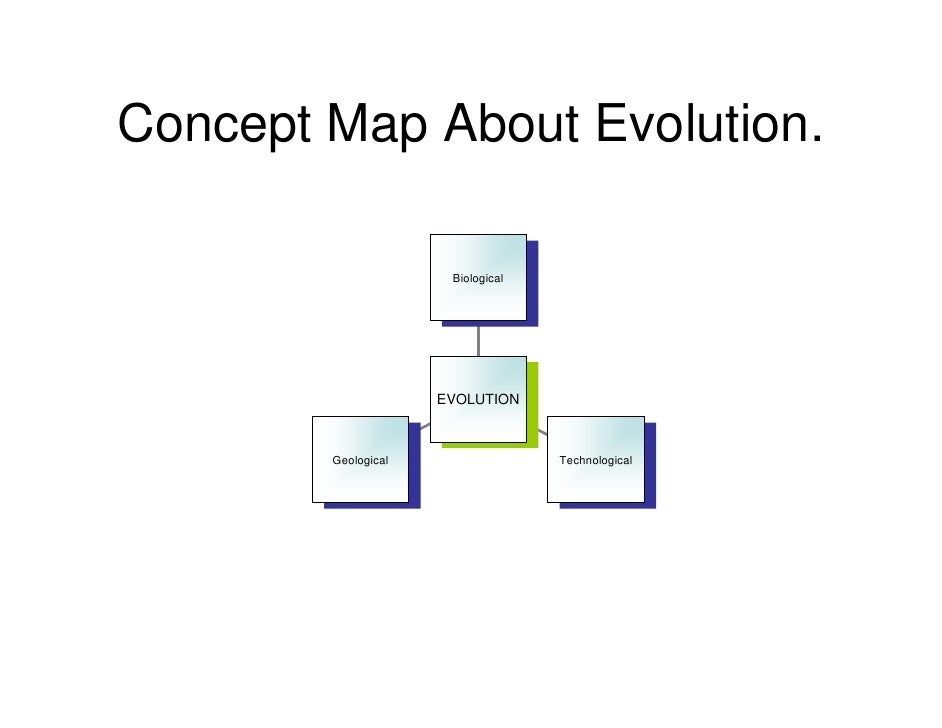Section 9: Patterns in Evolution. Evolution occurs in patterns. Convergent evolution coevolution punctuated equilibrium divergent evolution extinction adaptive radiation Main Idea: Evolution through natural selection is not random. Fill in the Main Idea in the center of the Main Idea Web below. Start studying Evolution concept map. Learn vocabulary, terms, and more with flashcards, games, and other study tools.
- Study Guide Concept Mapping Patterns Of Evolution Answer
- Evolution Concept Map Key
- Evolution Concept Map Answers
- Evolution Study Guide Pdf
- Evidence Of Evolution Concept Map
Concept Mapping
- The Theory of Evolution In science, theories are statements or models that have been tested and confirmed many times. Theories have some important properties: They explain a wide variety of data and observations They can be used to make predictions They are not absolute, they serve as a model of understanding the world and can.
- Concept maps communicate ideas well and prompt intuitive visual thinking that aid business analysis. Concept mapping is a group process, making it an ideal activity for teams or groups of stakeholders, and it is especially when solving problems, whether they be in marketing, new product design or administration.
Basic Strategy
Concept maps are drawings or diagrams used to help students organize and represent knowledge of a subject. Concept maps begin with a main idea (or concept) and then branch out to show how that main idea can be broken down into specific topics.
Why would you use it?
This activity provides an observable action of the student’s patterns of understanding related to a central idea or concept. Concept mapping serves several purposes:
Study Guide Concept Mapping Patterns Of Evolution Answer
- Helps students brainstorm and generate new ideas
- Encourages students to discover new concepts and the propositions that connect them
- Allows students to more clearly communicate ideas, thoughts and information
- Helps students integrate new concepts with older concepts
- Enables students to gain enhanced knowledge of any topic and evaluate the information
When can you use it?
Concept maps require a lot of cognitive work on the part of the student, and a lot of preparation and analysis on the part of the instructor. Be sure you have tested the concept map activity yourself and given the class the appropriate amount of time to complete the activity. Usually this means twice the amount of time it took you, the expert, to complete. This activity is useful in any course with high theoretical content, courses with large amounts of facts and principles.
How does it work?

- Select the concept/theme you wish students to use as a starting point.
- Create a concept map:
- Identify related key words or phrases. Write down words and key phrases.
- Rank the concepts (key words) from the most abstract/general to the most concrete/specific.
- Cluster concepts that function at similar level of abstraction and those that interrelate closely. Start to determine the ways the various concepts are related to each other and write that on the lines connecting the concepts.
- Arrange concepts into a diagram.
- Continue identifying the ways the various concepts are related to each other and write that on the lines connecting the concepts.
- Add second and third level associations, if appropriate.
- After students have completed the concept maps, present your own example to the students and walk through it with them step-by-step, explaining your thinking as you created the concept map.
Evolution Concept Map Key
Example concept map for diagnoses and treatment
Concept Map Template
Important Considerations for Using Concept Maps
- Concept mapping can be a very demanding cognitive task for students.
- Concept maps require a large amount of time and energy from faculty to formally assess; concept maps are generally not graded.
- Large classes may be managed easier if concept map assignments are assigned to small groups.
Other ideas
Evolution Concept Map Answers
- Use a top down approach, working from general to specific or use a free association approach by brainstorming nodes and then develop links and relationships.
- Assign a concept map as a small group activity to alleviate anxiety.
- Extend the activity by having students write an explanatory essay based on their maps.
- Construct a concept map and then remove all of the concept labels. Ask students to replace the labels in a way that makes structural sense.
- Create a concept map and then remove concepts from the nodes (about one-third of them). These deleted concepts are placed in a numbered list on the map and students choose among them.
- Provide a list of concept labels (10 to 20) and ask students to construct their maps using only these labels. The focus here is on the linking relationships, and the evolution of structural complexity of students’ knowledge frameworks.
Technology based options
Evolution Study Guide Pdf
There are numerous software tools where students can create concept maps digitally. A few favorites are:
Evidence Of Evolution Concept Map
- Canva https://www.canva.com/graphs/mind-maps/
- Free Mind http://freemind.sourceforge.net/wiki/index.php/
- Mindomo https://www.mindomo.com/